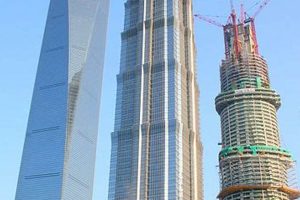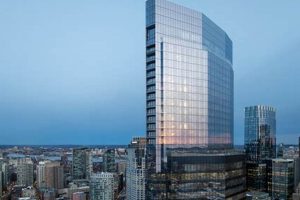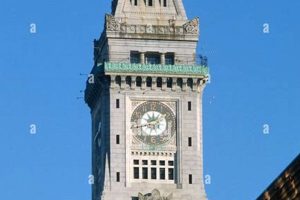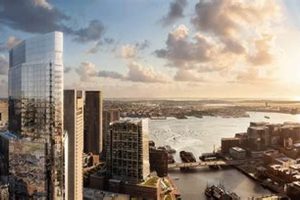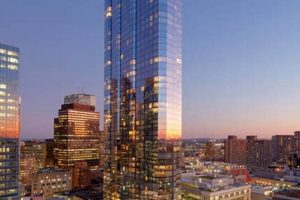Louis Sullivan, a prominent American architect of the late 19th and early 20th centuries, held a deep fascination for skyscrapers, which were emerging as a defining feature of modern urban landscapes. His admiration stemmed from several factors that aligned with his architectural philosophy and vision for the future of cities.
Sullivan believed that skyscrapers were not merely functional structures but also had the potential to be works of art. He saw them as a way to express architectural creativity and innovation, as well as to reflect the bustling energy and economic power of modern metropolises. His designs for skyscrapers, such as the Wainwright Building in St. Louis and the Carson, Pirie, Scott and Company Building in Chicago, showcased his commitment to aesthetics and ornamentation, incorporating intricate details and decorative elements that transformed these buildings into landmarks.
Beyond their artistic merits, Sullivan recognized the practical advantages of skyscrapers. They allowed for vertical expansion in densely populated urban areas, maximizing land use and accommodating a growing population. Sullivan believed that skyscrapers could provide efficient and comfortable living and working spaces, alleviating the congestion and unsanitary conditions prevalent in many cities at the time. Moreover, he saw them as a catalyst for urban development, drawing businesses, residents, and cultural institutions to central locations and fostering economic vitality.
1. Artistic Expression
As a renowned architect, Louis Sullivan’s passion for artistic expression was central to his design philosophy. Skyscrapers provided him with an exceptional canvas to showcase his creativity and architectural prowess. Sullivan believed that these towering structures were not merely functional buildings but also works of art, capable of inspiring awe and reflecting the dynamism of modern urban life.
- Ornamentation and Details: Sullivan’s skyscrapers were adorned with intricate ornamentation and decorative elements, such as the terra cotta frieze on the Wainwright Building and the elaborate ironwork on the Carson, Pirie, Scott and Company Building. These details not only enhanced the aesthetic appeal of his buildings but also conveyed his belief in the importance of beauty in architecture.
- Verticality and Form: Sullivan explored the expressive potential of skyscrapers’ verticality and form. He designed buildings with soaring heights and distinctive shapes, such as the triangular Bayard-Condict Building and the curved Guaranty Building. These innovative forms challenged conventional architectural norms and showcased Sullivan’s willingness to push boundaries.
- Integration of Arts: Sullivan believed in the integration of different art forms into architecture. He collaborated with artists and artisans to incorporate sculptures, murals, and stained glass into his skyscraper designs. This holistic approach resulted in buildings that were not only visually stunning but also celebrated the collaborative spirit of artistic creation.
In conclusion, Louis Sullivan’s appreciation for artistic expression was a driving force behind his fondness for skyscrapers. He saw these structures as opportunities to create architectural masterpieces that transcended mere functionality and elevated the urban landscape into a realm of beauty and inspiration.
2. Vertical Expansion
In the bustling urban centers of the late 19th and early 20th centuries, Louis Sullivan recognized the increasing need for efficient land use solutions to accommodate growing populations. Skycrapers presented an ingenious answer to this challenge, allowing cities to expand vertically rather than horizontally.
- Maximizing Space: Skyscrapers maximized land utilization by stacking residential, commercial, and office spaces vertically, allowing cities to accommodate more people and businesses within a limited footprint.
- Density and Accessibility: By concentrating people and activities in high-rise buildings, skyscrapers fostered a sense of density and accessibility. Residents and workers could easily access various amenities, transportation hubs, and cultural attractions within proximity.
- Improved Sanitation and Health: Vertical expansion played a role in improving urban sanitation and health conditions. Skyscrapers allowed for better ventilation and sunlight penetration, reducing the spread of diseases and providing healthier living environments.
- Urban Planning and Aesthetics: Sullivan believed that skyscrapers could contribute to the overall urban planning and aesthetics of cities. Well-designed skyscrapers could become landmarks and enhance the visual appeal of the urban landscape.
In conclusion, Louis Sullivan’s appreciation for vertical expansion was deeply rooted in the practical need to accommodate growing urban populations while enhancing the livability and aesthetics of cities. Skyscrapers represented an innovative solution that allowed cities to flourish vertically, creating denser, more accessible, and healthier urban environments.
3. Efficient Spaces
Louis Sullivan’s admiration for skyscrapers extended beyond their artistic and practical advantages. He recognized their potential to provide comfortable and functional living and working environments, a crucial factor in his overall appreciation of these towering structures.
Sullivan believed that skyscrapers could alleviate the overcrowding and unsanitary conditions prevalent in many cities during his time. By concentrating people and activities vertically, skyscrapers allowed for better ventilation, sunlight penetration, and access to essential amenities. This focus on efficient spaces contributed to healthier and more livable urban environments.
Sullivan’s commitment to efficient spaces was evident in his skyscraper designs. The Wainwright Building, for example, featured well-planned floor layouts that maximized natural light and provided ample space for tenants. Similarly, the Carson, Pirie, Scott and Company Building incorporated innovative engineering solutions to create large, open retail spaces that enhanced the shopping experience.
In conclusion, Sullivan’s belief in the importance of efficient spaces was an integral part of his fascination with skyscrapers. He saw these buildings not only as symbols of progress and modernity but also as practical solutions to
the challenges of urban living. By prioritizing comfortable and functional spaces, Sullivan’s skyscrapers contributed to the overall well-being and quality of life for city dwellers.
4. Economic Catalyst
Louis Sullivan’s fascination with skyscrapers was deeply intertwined with his belief in their potential to drive economic growth and urban development. He recognized that these towering structures could serve as catalysts for progress and prosperity in cities.
- Job Creation and Economic Activity: Skyscrapers provided substantial employment opportunities during their construction and maintenance, contributing to job creation and stimulating local economies. The presence of large-scale commercial and office spaces in skyscrapers attracted businesses and professionals, further boosting economic activity.
- Increased Land Value and Investment: The construction of skyscrapers increased the value of surrounding land, attracting further investment and development. This created a virtuous cycle of urban renewal and economic growth.
- Improved Infrastructure and Services: The development of skyscrapers often spurred improvements in urban infrastructure, such as transportation, utilities, and public spaces. These enhancements benefited not only the occupants of the skyscrapers but also the surrounding communities, fostering a more livable and attractive urban environment.
- Cultural and Civic Hubs: Sullivan believed that skyscrapers could serve as cultural and civic hubs within cities. By incorporating public spaces, observation decks, and other amenities, skyscrapers became destinations for people to gather, socialize, and engage with the city’s cultural offerings.
In conclusion, Louis Sullivan’s appreciation for skyscrapers was inextricably linked to their potential as economic catalysts and engines of urban development. He saw these vertical cities as symbols of progress, prosperity, and the transformative power of architecture.
5. Symbols of Progress
Louis Sullivan’s admiration for skyscrapers was deeply rooted in their symbolic representation of progress and modernity. During the late 19th and early 20th centuries, skyscrapers embodied the spirit of innovation, technological advancement, and economic prosperity that characterized the era.
For Sullivan, skyscrapers were more than mere buildings; they were physical manifestations of the transformative power of human ingenuity. Their soaring heights and innovative designs captured the public’s imagination, symbolizing the boundless possibilities and optimism of the modern age. Skyscrapers represented a departure from traditional architectural norms, embracing new materials and construction techniques to push the boundaries of architectural expression.
Sullivan’s own skyscraper designs exemplified this connection between skyscrapers and progress. The Wainwright Building, completed in 1891, was hailed as a masterpiece of modern architecture. Its intricate ornamentation and innovative steel frame construction showcased Sullivan’s belief in the harmonious integration of art and technology. Similarly, the Carson, Pirie, Scott and Company Building, completed in 1899, featured a grand atrium and a skylit court, symbolizing the openness and transparency of the modern business world.
In conclusion, Sullivan’s fascination with skyscrapers stemmed from their powerful symbolism of progress and modernity. These towering structures represented the dynamism, innovation, and optimism that defined the era, and Sullivan’s architectural designs captured the essence of this transformative period.
6. Reflection of Power
Louis Sullivan’s fascination with skyscrapers was deeply intertwined with their symbolic representation of power and economic prowess. During the late 19th and early 20th centuries, skyscrapers emerged as physical manifestations of the economic and commercial might that defined modern cities.
Sullivan recognized that skyscrapers were more than just functional structures; they were towering symbols of financial success, corporate dominance, and urban progress. The height and grandeur of these buildings conveyed a sense of power and ambition, reflecting the growing economic and commercial vitality of cities.
Sullivan’s own skyscraper designs exemplified this connection between skyscrapers and power. The Wainwright Building, for instance, was commissioned by Wainwright Tomb and Monument Company, a successful manufacturer of tombstones and mausoleums. The building’s imposing height and elaborate ornamentation symbolized the company’s economic strength and its desire to project an image of stability and permanence.
Similarly, the Carson, Pirie, Scott and Company Building, designed for a major department store, showcased the economic power of the retail industry. The building’s grand atrium and skylit court created a sense of spaciousness and luxury, reflecting the store’s reputation for providing a high-end shopping experience.
In conclusion, Sullivan’s admiration for skyscrapers stemmed from their powerful symbolism of economic and commercial might. These towering structures embodied the financial success and urban progress that characterized modern cities, and Sullivan’s architectural designs captured the essence of this dynamic and transformative era.
7. Aesthetic Beauty
Louis Sullivan’s pursuit of aesthetic beauty played a pivotal role in his fascination with skyscrapers. He believed that these towering structures provided a unique canvas to express his artistic vision and create buildings that transcended mere functionality. Sullivan’s skyscrapers were not just architectural marvels; they were works of art that adorned the urban landscape.
Sullivan’s commitment to aesthetic beauty is evident in the intricate details and ornamentation that grace his skyscraper designs. The Wainwright Building, for example, features a terracotta frieze that depicts scenes from nature, lending an organic touch to the building’s otherwise geometric form. Similarly, the Carson, Pirie, Scott and Company Building showcases elaborate ironwork and stained glass, creating a visually stunning and memorable facade.
Beyond their visual appeal, Sullivan’s intricate designs served a deeper purpose. He believed that ornamentation could convey symbolic meanings and enhance the overall experience of a building. The Carson, Pirie, Scott and Company Building’s ironwork, for instance, incorporates motifs that represent industry and commerce, reflecting the building’s function as a retail hub. Sullivan’s attention to detail extended to the interiors of his skyscrapers as well. The Wainwright Building’s lobby features a stunning mosaic floor and a grand staircase adorned with intricate metalwork, creating a sense of awe and grandeur.
In conclusion, Sullivan’s pursuit of aesthetic beauty was an integral part of his admiration for skyscrapers. He
saw these structures as opportunities to create not just functional buildings but also works of art that enriched the urban environment. Through his innovative designs and meticulous attention to detail, Sullivan elevated skyscrapers to the realm of high art, leaving a lasting legacy on the architectural landscape of American cities.
8. Urban Landmarks
Louis Sullivan’s skyscrapers were not just architectural achievements; they were also iconic landmarks that shaped the identity of the cities they inhabited. His buildings, such as the Wainwright Building in St. Louis and the Carson, Pirie, Scott and Company Building in Chicago, became symbols of urban progress, economic vitality, and architectural innovation.
Sullivan’s skyscrapers were designed to make a statement. They were often taller and more elaborate than other buildings in their vicinity, and they featured distinctive design elements that made them instantly recognizable. For example, the Wainwright Building’s terra cotta frieze and the Carson, Pirie, Scott and Company Building’s ironwork and stained glass windows set them apart from other commercial buildings of their time.
Sullivan’s skyscrapers not only shaped the physical appearance of cities but also influenced their cultural and social identities. The Wainwright Building, for example, became a symbol of St. Louis’s growing economic power and civic pride. Similarly, the Carson, Pirie, Scott and Company Building became a popular destination for shoppers and tourists alike, helping to establish Chicago as a major retail and cultural hub.
In conclusion, Louis Sullivan’s skyscrapers were more than just functional buildings; they were also iconic landmarks that shaped the identity of cities. His buildings were symbols of urban progress, economic vitality, and architectural innovation, and they continue to be admired and celebrated today.
FAQs
This section addresses frequently asked questions and misconceptions surrounding Louis Sullivan’s fascination with skyscrapers, providing concise answers based on historical context and architectural analysis.
Question 1: What were the primary reasons behind Louis Sullivan’s admiration for skyscrapers?
Louis Sullivan viewed skyscrapers as multifaceted structures that combined artistic expression, practical functionality, and symbolic significance. He appreciated their ability to enhance urban landscapes aesthetically, provide efficient spaces for living and working, and embody the dynamism and power of modern cities.
Question 2: How did Sullivan incorporate artistic elements into his skyscraper designs?
Sullivan believed that skyscrapers should transcend mere functionality and serve as works of art. He incorporated intricate ornamentation, such as the terra cotta frieze on the Wainwright Building and the ironwork on the Carson, Pirie, Scott and Company Building, to enhance their visual appeal and convey symbolic meanings.
Question 3: What practical advantages did Sullivan see in skyscrapers?
Sullivan recognized the practical advantages of skyscrapers in accommodating growing urban populations and maximizing land use. He believed they could provide efficient and comfortable living and working spaces, alleviating the congestion and unsanitary conditions prevalent in cities at the time.
Question 4: How did Sullivan’s skyscrapers contribute to urban development?
Sullivan saw skyscrapers as catalysts for urban development, attracting businesses, residents, and cultural institutions to central locations. Their presence stimulated economic growth, improved infrastructure, and enhanced the overall livability and attractiveness of cities.
Question 5: What symbolic meanings did Sullivan associate with skyscrapers?
Sullivan viewed skyscrapers as symbols of progress, modernity, and economic power. Their soaring heights and innovative designs represented the dynamism and optimism of the era, while their grandeur reflected the growing economic and commercial might of modern cities.
Question 6: How did Sullivan’s skyscrapers influence the architectural landscape of American cities?
Sullivan’s skyscrapers became iconic landmarks, shaping the identity of cities like St. Louis and Chicago. Their distinctive designs and artistic flourishes set them apart from other buildings, making them symbols of urban pride and architectural innovation.
In conclusion, Louis Sullivan’s admiration for skyscrapers stemmed from their artistic, practical, and symbolic significance. He saw them as opportunities to create not just functional buildings but also works of art that contributed to the beauty, functionality, and overall progress of modern cities.
To delve further into the topic, explore the following section, which examines specific design elements and case studies of Sullivan’s skyscrapers.
Tips
To gain a deeper understanding of Louis Sullivan’s admiration for skyscrapers, consider these insightful tips:
Tip 1: Examine Sullivan’s Artistic Vision: Explore his belief that skyscrapers were canvases for artistic expression. Analyze how he incorporated ornamentation, such as the terra cotta frieze on the Wainwright Building, to enhance their aesthetic appeal.
Tip 2: Consider the Practical Advantages: Recognize Sullivan’s appreciation for skyscrapers’ functionality. Study how they addressed the need for efficient land use and provided comfortable living and working spaces in growing urban areas.
Tip 3: Understand the Symbolism of Skyscrapers: Examine how Sullivan saw skyscrapers as symbols of progress and modernity. Analyze how their soaring heights and innovative designs reflected the dynamism and optimism of the era.
Tip 4: Analyze Sullivan’s Commitment to Urban Development: Study his belief that skyscrapers could stimulate economic growth and urban renewal. Explore how they attracted businesses and residents, leading to improved infrastructure and enhanced livability.
Tip 5: Explore Sullivan’s Architectural Innovations: Investigate his pioneering use of steel frames and innovative construction techniques to create taller and more structurally sound skyscrapers. Analyze how these advancements influenced the architectural landscape of the time.
Summary: By considering these tips, you can gain a comprehensive understanding of Louis Sullivan’s fascination with skyscrapers. His architectural designs not only shaped the skylines of modern cities but also reflected his artistic vision, practical considerations, and commitment to urban progress.
Conclusion
Louis Sullivan’s admiration for skyscrapers stemmed from their multifaceted nature, encompassing artistic expression, practical functionality, and symbolic significance. As canvases for his artistic vision, skyscrapers allowed Sullivan to push the boundaries of architectural ornamentation and create visually stunning landmarks. Their efficient designs addressed the challenges of urban growth, providing comfortable and functional living and working spaces. Moreover, Sullivan saw skyscrapers as emblems of progress, modernity, and economic power, reflecting the dynamism and optimism of the era.
Sullivan’s unwavering belief in the potential of skyscrapers left a lasting impact on the architectural landscape of American cities. His innovative designs and commitment to urban development shaped the skylines of St. Louis, Chicago, and beyond, inspiring generations of a
rchitects and urban planners. By recognizing the multifaceted significance of skyscrapers, we can gain a deeper appreciation for Sullivan’s architectural legacy and its enduring relevance in shaping our built environment.


